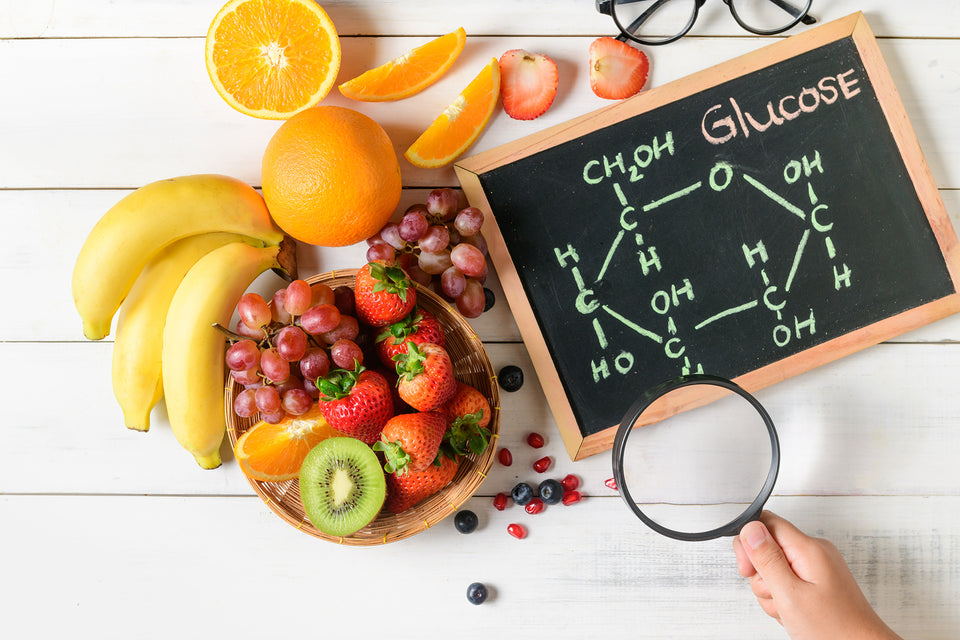You’ve probably come across fast-releasing sugars at some point.
Maybe you’ve read about them in a fitness forum, or perhaps you’ve experimented with them yourself.
In any case, you’re probably wondering:
“What exactly are these fast-releasing sugars, and how do they affect me?”
Today, we’ll go over everything you need to know.

What Are Fast-Releasing Sugars?
Before we answer this question, we first need to take a quick look at what carbohydrates are. Carbs are organic molecules, and we typically classify them according to their structure. There are two primary categories – simple (mono- and disaccharides) and complex (polysaccharides).
Mono- and disaccharides, as their names suggest, are carb structures with one or two sugar molecules, respectively. Because monosaccharides consist of a single sugar molecule, the body cannot break them down further. Disaccharides are relatively similar as breaking the bond between the two sugar molecules happens rather quickly. As a whole, these are the fast-releasing sugars we’ll be looking at today.
When ingested, fast-releasing sugars cause a quick rise in blood glucose levels. They also produce a higher increase in insulin levels.
Polysaccharides, on the other hand, are complex forms of carbs and are made of multiple linked monosaccharides. They get digested more slowly and cause a more gradual rise in blood glucose levels.
Four Types of Fast-Releasing Sugars
Let’s take a look at some of the individual sugars:
1. Dextrose
Dextrose (also known as d-glucose), the d-isomer of glucose is a simple sugar that is made from corn. It’s often used as an ingredient for baked goods, but we can also find dextrose in corn syrup and other processed foods.
Thanks to its simple structure, the body utilizes it quickly. In the medical field, dextrose can be given intravenously to increase and maintain blood sugar levels.
In the bodybuilding community, dextrose has been used as a fast-digesting carb that helps kick start glycogen restoration. Back in the day, folks often took it with protein powder to begin the recovery process.
2. Glucose Monohydrate
This is the monohydrate version of glucose (and dextrose). The compound is often used to provide us with energy and is one of the primary ingredients in oral rehydration salts (ORS). Much like dextrose, this is also used as part of intravenous fluids to help maintain stable blood sugar levels in patients.
According to research, dextrose and glucose monohydrate play a role in the production of proteins and lipid (fat) metabolism.
3. Maltodextrin
Unlike the previous two sugars, maltodextrin is a polysaccharide. It has a more complex structure and tends to release its energy a bit more slowly.
Maltodextrin is derived from veggie starch thanks to a process called partial hydrolysis (where water molecules sever chemical bonds and break complex structures into simpler ones). The process typically looks like this:
Starches are cooked, and then acids or enzymes are added to the mix to break them down further. This results in a water-soluble substance known as maltodextrin.
4. Vitargo
Vitargo is a company that prides itself on its naturally-occurring starch of the same name. Similar to maltodextrin, vitargo is also a polysaccharide and releases its energy quickly.
The product is often used as a pre-workout as it allows for a good dose of energy without the associated bloating, nausea, or general GI discomfort.
What Are The Benefits Of Taking Fast-Releasing Sugars?
Before wrapping up this post, let’s take a look at two fantastic benefits you can gain from taking fast-releasing sugars:
1. They Provide A Quick Source Of Energy
The most apparent benefit of fast-releasing sugars is that they provide us with a quick source of energy. For example, if you’re about to have a workout, but you haven’t had the time for a good pre-workout meal, then taking some fast-releasing sugars could be a viable strategy. That way, you can get some energy without risking GI distress.
Also, if your workouts tend to be particularly long and draining, then having some fast-releasing sugars within the workout (say, at the halfway point) is also beneficial. One reason why our performance suffers as the workout progresses has to do with glycogen depletion. But, by having some intra-workout carbs, we can offset this to a degree and hopefully minimize performance loss.
2. To Help Kickstart Glycogen Replenishment
Simple sugars are particularly beneficial for glycogen replenishment, especially shortly after training, because we absorb them more quickly.
This allows us to kickstart glycogen replenishment much quicker and hopefully speed up the post-workout recovery process to a degree.

Leave a comment